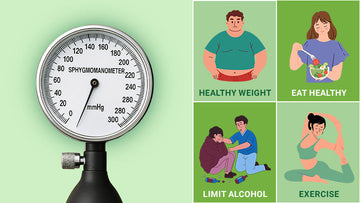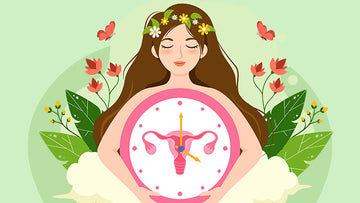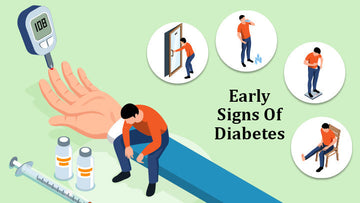Joint pain isn't something you have to accept as a part of getting older or living an active life. Whether you're an athlete, a busy parent, or someone who spends hours at a desk, your joints play a vital role in your daily movement and quality of life. Recognizing the early warning signs of joint problems can make all the difference in preventing long-term damage and staying active and pain-free.
What Are the Early Signs of Joint Problems?
Many joint issues start subtly. Here are some early red flags to watch out for:
1. Persistent or Recurring Pain
Pain that sticks around for more than a few days or keeps coming back is worth paying attention to. It's your body's way of saying something isn't right — whether it's inflammation, overuse, or the start of a chronic condition like osteoarthritis.
2. Morning Stiffness
Waking up with stiff joints, especially if it lasts more than 30 minutes, can be an early sign of rheumatoid arthritis or other inflammatory joint diseases.
3. Swelling
If you notice puffiness or swelling in your joints, it may mean there's fluid buildup or inflammation. This is especially common after physical activity or injury.
4. Limited Range of Motion
Struggling to fully bend, straighten, or rotate a joint? That decreased flexibility can signal cartilage damage or the early stages of joint degeneration.
5. Clicking or Popping Sounds (Crepitus)
Hearing grinding, popping, or clicking in a joint — especially when paired with pain — might be an indicator of worn cartilage or instability in the joint.
6. Warmth and Redness
Inflamed joints can feel warm to the touch or appear red. This could be a sign of infection or an autoimmune response, and it shouldn't be ignored.
7. Weakness or Instability
Does your knee give out unexpectedly? Do your shoulders feel like they can't support weight? Weak or unstable joints may signal ligament damage or progressive joint wear.
How to Address Joint Issues Early
The earlier you act, the better your chances of managing symptoms and preventing long-term damage. Here’s what you can do:
1. Get a Professional Evaluation
If you notice any of the signs above, don’t wait — talk to a doctor. Early diagnosis from a general practitioner, orthopedic specialist, or rheumatologist can lead to more effective treatment.
2. Stay Active, But Smart
Low-impact exercises like swimming, biking, yoga, or walking can strengthen muscles around joints and reduce stiffness without adding stress. A physical therapist can create a personalized plan for you.
3. Focus on Joint-Friendly Nutrition
Adopt an anti-inflammatory diet with:
-
Omega-3 rich foods (like salmon, flaxseeds, and walnuts)
-
Colorful fruits and vegetables
-
Whole grains
-
Spices like turmeric and ginger
Avoid processed foods, sugary snacks, and excessive red meat, which may worsen inflammation.
4. Maintain a Healthy Weight
Extra weight adds pressure on joints — especially knees, hips, and lower back. Even a small weight loss can significantly reduce joint stress.
5. Use Support Wisely
Braces, orthotic inserts, and ergonomic tools (like standing desks or cushioned mats) can reduce joint strain during daily activities.
6. Try Over-the-Counter Relief (With Caution)
Nonsteroidal anti-inflammatory drugs (NSAIDs) like ibuprofen may help reduce pain and swelling, but they shouldn’t be a long-term solution without a doctor's guidance.
7. Consider Supplements
Some people find relief with supplements like glucosamine, chondroitin, or turmeric (curcumin). Always consult your doctor before starting anything new.
Take Care of Your Joints – They’ll Take Care of You
Joint health is crucial to your overall well-being and independence. By listening to your body and taking early signs seriously, you can stay ahead of potential problems and enjoy an active, pain-free life.
If you're already noticing some of these symptoms, it might be time to check in with a health professional — your future self will thank you.







